India is not just a country; it’s a living museum where every corner tells a story. From ancient temples to majestic forts and vibrant cultural festivals, India’s heritage is a timeless treasure that continues to inspire awe and wonder. Whether you’re a history buff, a curious traveler, or someone seeking a deeper connection with the past, exploring the cultural and heritage places in India offers a journey like no other.
In this blog, we’ll take you through ten of the most iconic heritage destinations in India — places where tradition meets architecture, and history comes alive. Get ready to step back in time and witness the rich cultural soul of India. You can also read this post in Hindi 10 बेहतरीन भारत की सांस्कृतिक और विरासत स्थल
Table of Contents
1.Taj Mahal, Agra – The Eternal Symbol of Love

No list of cultural and heritage places in India is complete without the mention of the Taj Mahal. Located on the banks of the Yamuna River in Agra, this white marble wonder is one of the most iconic monuments in the world and a UNESCO World Heritage Site.
Built in the 17th century by Mughal Emperor Shah Jahan in memory of his beloved wife Mumtaz Mahal, the Taj Mahal stands as a timeless symbol of love and devotion. Its intricate carvings, majestic domes, symmetrical gardens, and changing shades with sunlight leave every visitor mesmerized.The Taj Mahal attracts millions of visitors annually, making it one of the most visited sites in India and timeless tribute to love and remains a symbol of India’s artistic and historical legacy.
Why Visit:
- Marvel at its flawless Mughal architecture
- Witness the breathtaking sunrise view
- Explore the surrounding Agra Fort and Mehtab Bagh
Best Time to Visit: October to March (especially early morning for fewer crowds and golden light)
Tip: Closed on Fridays. Try visiting on a weekday for a peaceful experience.
Did You Know? The Taj Mahal appears pink in the morning, white in the evening, and golden at night under moonlight!
2.Red Fort, Delhi – The Pride of Mughal Majesty
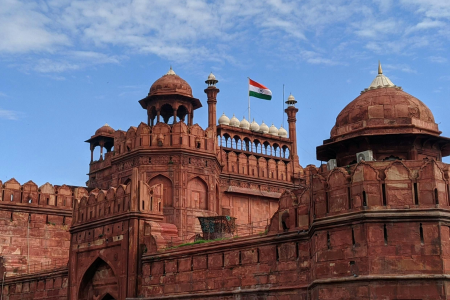
Red Fort is one of the most iconic cultural and heritage places in India. Standing tall in the heart of Old Delhi, the Red Fort is a majestic symbol of India’s rich Mughal legacy. Constructed in 1648 by Emperor Shah Jahan, this stunning red sandstone fort was once the main residence of the Mughal emperors. Today, it stands not just as an architectural wonder, but as a proud emblem of India’s struggle for independence — the Prime Minister hoists the national flag here every Independence Day.
This UNESCO World Heritage Site beautifully blends Persian, Timurid, and Indian architectural styles. Inside, you’ll find lush gardens, marble halls, royal chambers, and the famous Lahori Gate, which opens up to centuries of stories.
Why Visit:
- Explore Diwan-i-Aam, Diwan-i-Khas & Moti Masjid
- Attend the Light & Sound Show (in the evening)
- Great for photography and history lovers
Best Time to Visit: October to March (pleasant weather for walking around)
Tip: Visit early morning to avoid crowds and explore nearby places like Jama Masjid and Chandni Chowk.
Heritage Fact: The Red Fort was originally white and made of limestone — the British painted it red after the limestone started chipping off!
3.Golden Temple, Amritsar – A Divine Blend of Culture, Faith, and Peace
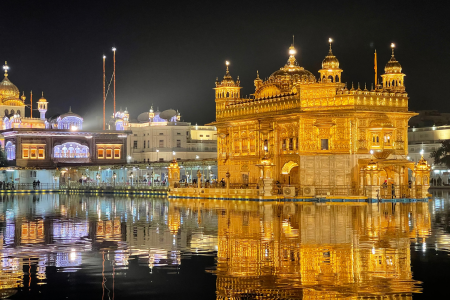
The Golden Temple, also known as Sri Harmandir Sahib, is one of the most peaceful and spiritually uplifting cultural and heritage places in India. Located in Amritsar, Punjab, this stunning golden shrine is the holiest site in Sikhism and a symbol of equality, compassion, and unity.
Surrounded by the sacred Amrit Sarovar (holy pool), the temple’s shimmering reflection in the water is a sight to behold, especially during sunrise and sunset. Despite being a major tourist attraction, it retains a deep spiritual atmosphere, welcoming people of all faiths and backgrounds.
One of the most heartwarming experiences here is the Langar — a community kitchen that serves free meals to thousands daily, regardless of caste, religion, or nationality.
Why Visit:
- Experience divine serenity and spiritual energy
- Witness the beauty of the temple illuminated at night
- Enjoy the peaceful vibe of the Sikh tradition and hospitality
Best Time to Visit: November to March (cool weather and festive ambiance)
Tip: Cover your head, remove shoes, and maintain silence around the sanctum for a respectful visit.
Did you know? The Golden Temple serves over 100,000 free meals (langar) every single day — making it the world’s largest free kitchen.
Explore to Know: Best 10 Spiritual Places in India
4.Jaipur, Rajasthan – The Pink City of Culture and Heritage
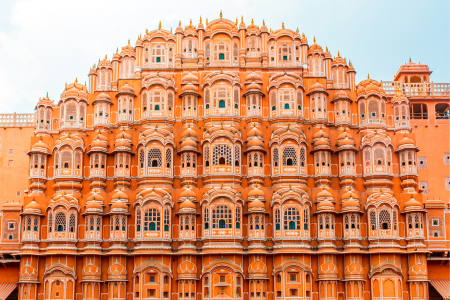
Jaipur, famously known as the Pink City, is a shining jewel among the cultural and heritage places in India. As the capital of Rajasthan, Jaipur is a perfect blend of royal history, stunning architecture, and vibrant traditions. The city’s colorful bazaars, majestic forts, and intricate palaces tell stories of Rajput valor and grandeur.
From the magnificent Amer Fort and City Palace to the unique Hawa Mahal (Palace of Winds), Jaipur offers visitors a rich cultural experience at every corner. Its traditional arts, crafts, and festivals make it a lively destination that celebrates India’s royal heritage with pride.
Why Visit:
- Explore the royal forts and palaces with rich history
- Shop for traditional Rajasthani textiles, jewelry, and handicrafts
- Experience vibrant festivals like Jaipur Literature Festival and Teej
Best Time to Visit: October to March (pleasant weather and festive season)
Tip: Hire a guide at Amer Fort to understand the fascinating history and legends behind the architecture.
Heritage Fact: Jaipur is India’s first planned city, designed in 1727 using ancient Hindu architectural principles known as Vastu Shastra.
5.Rann of Kutch, Gujarat – The Magical White Salt Desert
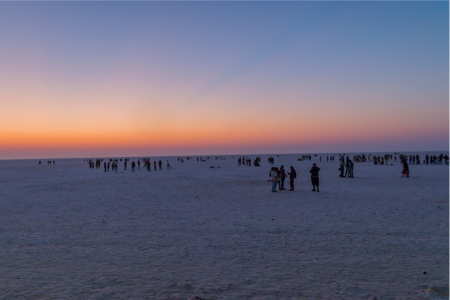
The Rann of Kutch is truly one of the most extraordinary cultural and heritage places in India. Located in Gujarat, this vast salt desert transforms into a sparkling white wonderland during the winter months. Beyond its surreal natural beauty, the Rann is a vibrant hub of local culture, colorful festivals, and traditional handicrafts of the Kutchi people.
Every year, the famous Rann Utsav attracts travelers from all over the world. This cultural festival showcases folk dances, music, art, and authentic Kutchi cuisine under the magical full moon night, offering a unique way to experience India’s rich heritage. The festival also allowing visitors to savor dishes like dhokla, thepla, and local made sweets.
Why Visit:
- Witness the breathtaking white salt desert stretching endlessly
- Immerse in the vibrant local culture and traditional crafts
- Enjoy the Rann Utsav festival with live performances and rural village tours
Best Time to Visit: November to February (cool and festive season)
Tip: Stay in traditional tents or cottages to fully experience Kutchi hospitality and culture.
Did you know? The Rann of Kutch is so vast, it can be seen from space — and it turns into a glowing salt desert under moonlight.
6.Khajuraho, Madhya Pradesh – The Artistic Marvel of Ancient Temples
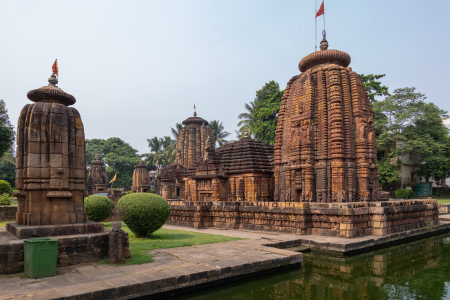
Khajuraho is one of the most fascinating cultural and heritage places in India, renowned worldwide for its stunning group of ancient Hindu and Jain temples. Built between 950 and 1050 AD, these temples are celebrated for their intricate sculptures, detailed carvings, and unique architectural style that beautifully captures ancient Indian art and mythology.
The Khajuraho temples are a UNESCO World Heritage Site, attracting art lovers, historians, and travelers alike. The blend of spirituality and eroticism in the carvings tells stories of life, love, and devotion from centuries ago, making it a truly unforgettable experience.
The temples are divided into three groups: Western, Eastern, and Southern. Among them, the Kandariya Mahadev Temple stands out as a masterpiece, showcasing over 800 statues that depict various aspects of life, devotion, and divine beauty. Built between the 10th and 12th centuries by the Chandela dynasty.
Why Visit:
- Explore exquisitely carved temples full of history and art
- Enjoy the evening sound and light show that narrates Khajuraho’s past
- Discover the peaceful surroundings and nearby archaeological museum
Best Time to Visit: October to March (pleasant weather for sightseeing)
Tip: Hire a local guide to fully appreciate the symbolism and stories behind the temple art.
Heritage Fact: Only 20 of the original 85 temples at Khajuraho have survived — and yet they still narrate centuries-old tales through carvings.
7.Mysore, Karnataka – A Regal City Steeped in Culture
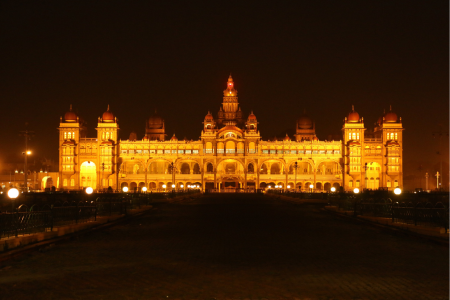
Mysore, often called the Cultural Capital of Karnataka, is undoubtedly one of the most regal and charming cultural and heritage places in India. Famous for its majestic Mysore Palace, the city showcases the opulence of the Wodeyar dynasty and the rich traditions of South India.
From vibrant silk sarees and sandalwood products to classical dance and yoga, Mysore effortlessly blends royal heritage with spiritual depth. The grandeur of the Dussehra festival, celebrated with processions and cultural performances, brings the city to life every year.
Our cultural highlights include the Chamundeshwari Temple which reflects Mysore’s deep spiritual roots. The Dasara Festival, a 10-day cultural extravaganza celebrating the victory of good over evil. The city is home to cultural landmarks such as the Jaganmohan Palace Art Gallery, showcasing works of celebrated artists.
Why Visit:
- Witness the grandeur of Mysore Palace, beautifully lit every Sunday and festival night
- Explore Chamundi Hill, St. Philomena’s Church, and the local bazaars
- Discover the charm of traditional Mysore painting and crafts
Best Time to Visit: October to February (especially during Dussehra)
Tip: Don’t miss the Mysore Dasara procession — a true spectacle of Karnataka’s cultural heritage.
Did you know? The Mysore Palace is illuminated with nearly 100,000 bulbs every Sunday night — a magical tradition that attracts thousands.
8.Lucknow, Uttar Pradesh – The City of Nawabs
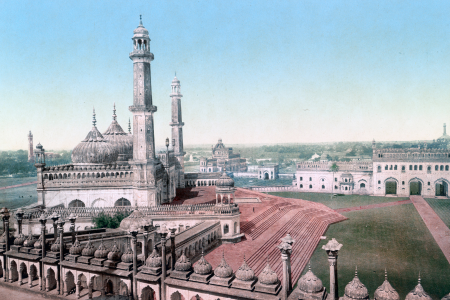
Lucknow, the charming capital of Uttar Pradesh, is a shining example among the cultural and heritage places in India. Known as the “City of Nawabs”, it reflects the grandeur of Mughal and Awadhi culture through its architecture, cuisine, and polite language.
Iconic monuments like the Bara Imambara, Chota Imambara, Rumi Darwaza, and the British Residency narrate stories of a glorious past. The city is also famous for its classical Kathak dance, delicate Chikankari embroidery, and mouthwatering Awadhi cuisine — especially kebabs and biryanis.
Walking through the old lanes of Lucknow is like stepping into a bygone era, where culture and elegance still live on in every gesture, building, and bite.
Why Visit:
- Explore beautiful Mughal and Awadhi architecture
- Enjoy authentic Lucknowi food in historic settings
- Witness traditional art forms and handicrafts
Best Time to Visit: November to February (cool, comfortable weather for sightseeing)
Tip: Take a heritage walk through Chowk and Hazratganj to fully enjoy the city’s old-world charm.
Heritage Fact: Lucknow’s ‘Bada Imambara’ has the world’s largest arched hall without any support beams — a true engineering marvel from 1784.
9.Kolkata, West Bengal – The Cultural Soul of India
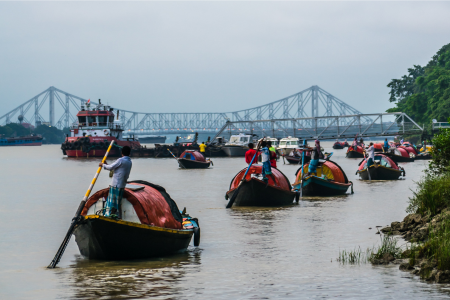
Kolkata, the capital of West Bengal, is truly the cultural and intellectual heart of India. Once the capital of British India, the city is filled with majestic colonial architecture, historical landmarks, and a deep love for art, literature, and music. It’s no surprise that Kolkata is regarded as one of the most enriching cultural and heritage places in India.
From the grand Victoria Memorial and Indian Museum to the vibrant lanes of College Street and Kumartuli, Kolkata captures the timeless beauty of India’s past and present. The city is also home to iconic personalities like Rabindranath Tagore and Satyajit Ray, whose legacies still echo through its streets and museums.
Whether you’re sipping chai in a vintage adda or soaking in the aura of Durga Puja, Kolkata wraps you in warmth, history, and a love for culture that’s hard to forget.
Why Visit:
- Discover British-era architecture and India’s oldest museum
- Witness Durga Puja, one of the most celebrated festivals in the country
- Explore bookstores, street food, and riverfront ghats along the Hooghly
Best Time to Visit: October to February (pleasant weather and festive atmosphere)
Tip: Visit during Durga Puja for the most vibrant cultural experience
Did you know? Kolkata’s Indian Museum is the oldest in India and one of the largest in Asia — housing mummies, fossils, and ancient art.
10.Mahabalipuram, Tamil Nadu – Where Stone Speaks the Story of Ancient India
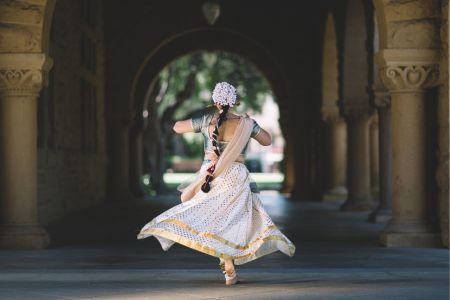
Mahabalipuram, also known as Mamallapuram, is a timeless treasure located on the Coromandel Coast of Tamil Nadu. This ancient port city is one of the most iconic cultural and heritage places in India, famous for its rock-cut temples and stunning stone sculptures carved directly into granite.
The UNESCO World Heritage Site of the Group of Monuments at Mahabalipuram includes wonders like the Shore Temple, Pancha Rathas, and Arjuna’s Penance — each narrating stories from Hindu epics through masterful stonework. Built during the Pallava dynasty in the 7th–8th centuries, the artistry here is both spiritual and architectural brilliance.
Mahabalipuram is a peaceful coastal town where you can walk along the beach, explore age-old carvings, and watch skilled artisans continue the legacy of stone sculpting. The annual Mahabalipuram Dance Festival, held against the backdrop of its historic monuments, celebrates classical Indian dance forms.
Why Visit:
- Marvel at intricate stone temples and ancient rock reliefs
- Experience Tamil Nadu’s Dravidian architecture and spiritual heritage
- Relax by the Bay of Bengal and explore nearby beaches
Best Time to Visit: November to February (ideal weather for sightseeing)
Tip: Visit early morning to enjoy the monuments without the crowd and with beautiful light for photography.
Heritage Fact: The Shore Temple has stood strong through tsunamis and sea storms — and is one of the oldest structural stone temples in South India.
Also Read: Best 31 Places of Prayagraj to visit
Final Thought
India’s cultural and historical landscape is not just about monuments and temples — it’s about stories, emotions, traditions, and living history. Each destination on this list, from the timeless beauty of the Taj Mahal to the spiritual serenity of Golden Temple or the ancient art of Mahabalipuram, reflects the unique soul of India.
Exploring these cultural and heritage places in India isn’t just about travel — it’s about experiencing the identity of a civilization that has stood the test of time. So whether you’re a history enthusiast, a culture lover, or just a curious traveler, let these iconic locations be your gateway to India’s glorious past and inspiring present.
Start your heritage journey today — and let India’s timeless spirit leave you awe-inspired.


3 thoughts on ““Top 10 Cultural and Heritage Places in India You Must Explore in 2025””